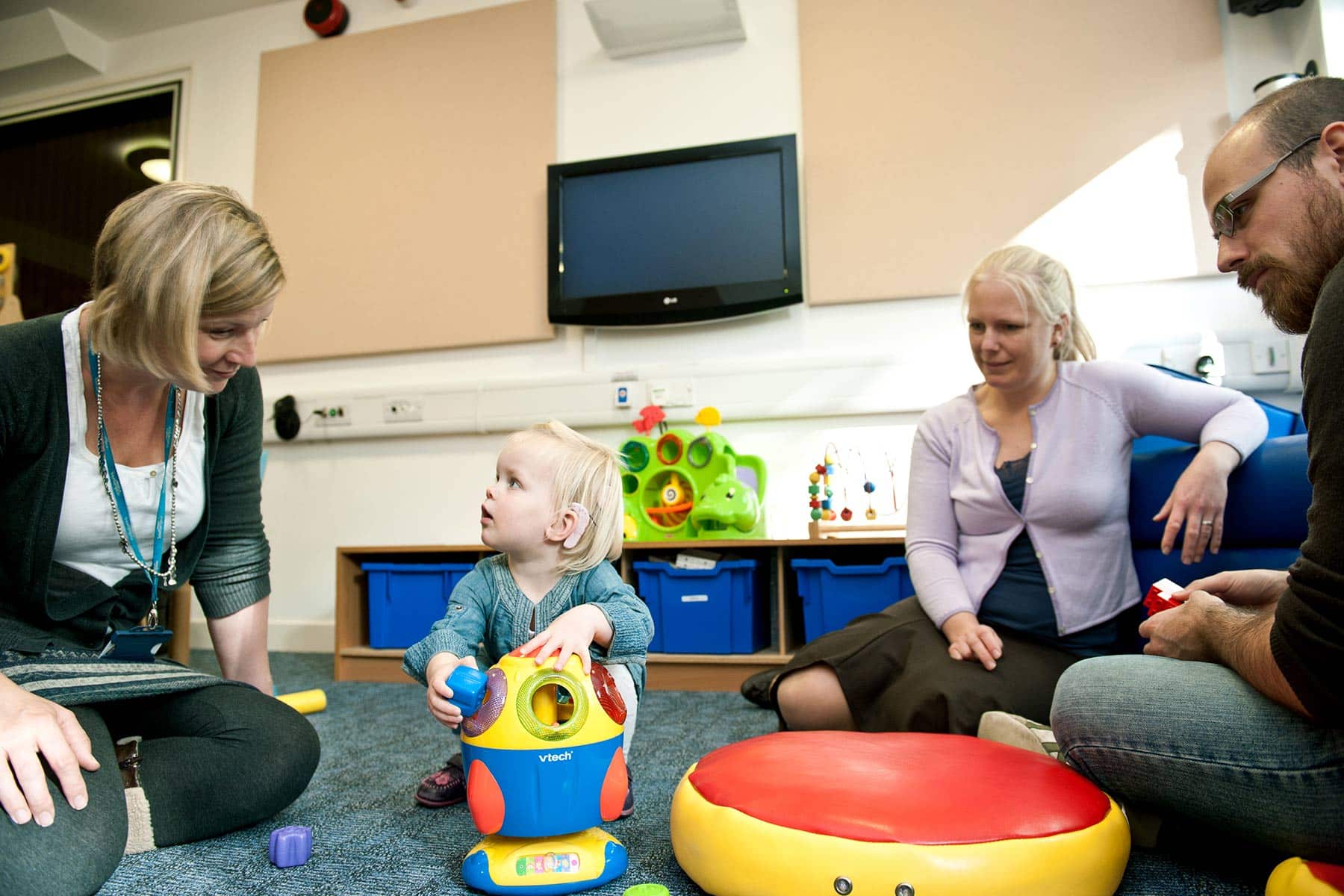MED-EL
Published May 01, 2015
What’s Your Child’s Hearing Age?

Cochlear implants can help your child develop their communication skills—like listening and speaking—but it likely won’t be an instant change. The most effective way to help your child develop is by practicing with hearing-age-appropriate exercises.
Their hearing age isn’t the same as how old they are. Rather, it’s how long they’ve been hearing with their cochlear implant. It’s a pretty straightforward idea: practicing with exercises that are too easy won’t challenge them, and exercises that are too hard could discourage them.
So, to help you get an idea of where your child’s progress stands here are some of the steps that professionals use to chart hearing and expressive language development:
- Hearing
- Awareness. Your child can detect sounds. He or she won’t understand what they mean, but will know that a sound is present.
- Discrimination and beginning speech association. Your child can tell or recognize that there’s a difference between words said with different pitches, intonations, lengths, and rhythms—that is, a sing-song voice. He or she also shows awareness to sound and starts to attach meaning to familiar and routine utterances which are said with much intonation.
- Identification. Your child is building a listening vocabulary and understands simple sentences like “Wash your hands”, “It’s bath time”, “Turn off the TV, and go get your shoes”.
- Comprehension. Your child can understand longer and more complex statements; can answer questions; uses thinking skills like inference; and understands a longer story and remembers the details, sequencing, and meaning of the story.
- Expressive Language
- Word approximation. Your child attempts to say words and, while maybe not producing all the sounds correctly, approximates the word consistently. For example, “baba” is used consistently when your child sees his or her bottle.
- Word production. Your child produces single words that are understood by familiar and unfamiliar people.
- Connected utterances. Your child has a vocabulary of some 30-50 words and starts combining them to convey meaning. For example, “mommy sit” and “doggie go bye bye”.
- Sentence production. Your child can create grammatically correct sentences of varying complexities; from simple sentences like “The boy is eating”, to advanced sentences like “The boy is eating a green apple”, and complex sentences like “The boy is eating a green apple because he is hungry”.
At the same time, in daily life you should give your child the chance to grow up in an environment with rich and varied language. Talk about what you are doing, talk about what your child is doing, use simple phrases, and use long and complex descriptions. Expose your child to all levels of auditory and expressive language skills. Regardless of your child’s hearing age, narrate what’s going on with a complexity of language that matches the situation.
If you’re a parent of a child with a cochlear implant, what games do you play to help develop their communication skills? Let us know in a comment below!
This post was written with help from MaryKay Theres, a speech-language pathologist.
MED-EL
Was this article helpful?
Thanks for your feedback.
Sign up for newsletter below for more.
Thanks for your feedback.
Please leave your message below.
Thanks for your message. We will reply as soon as possible.
Send us a message
Field is required
John Doe
Field is required
name@mail.com
Field is required
What do you think?
MED-EL


